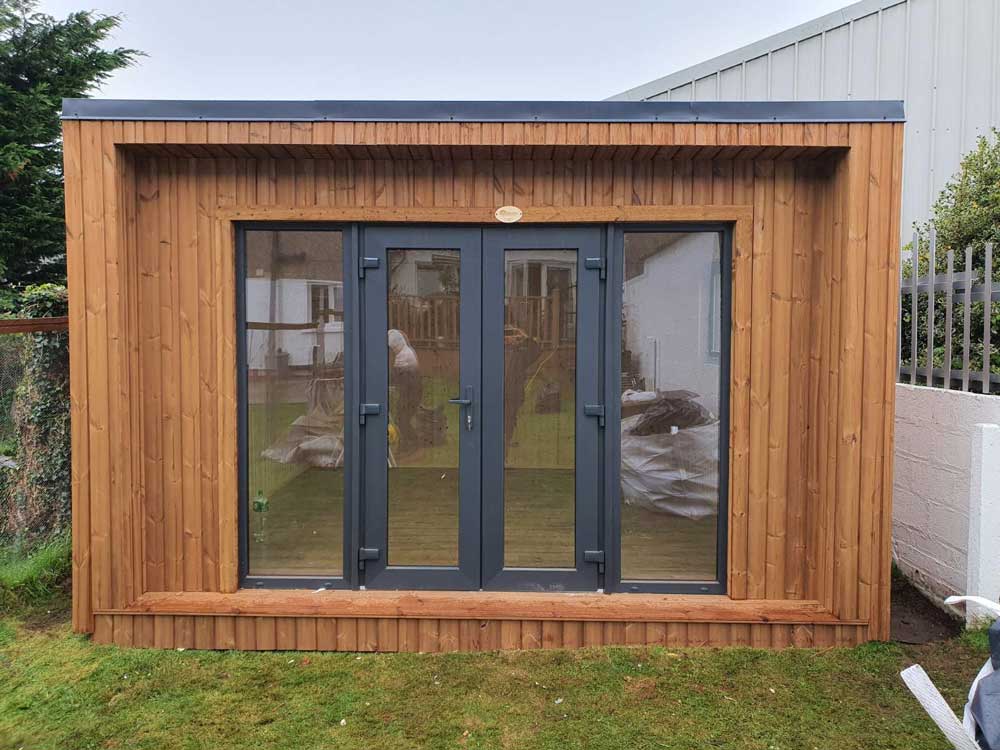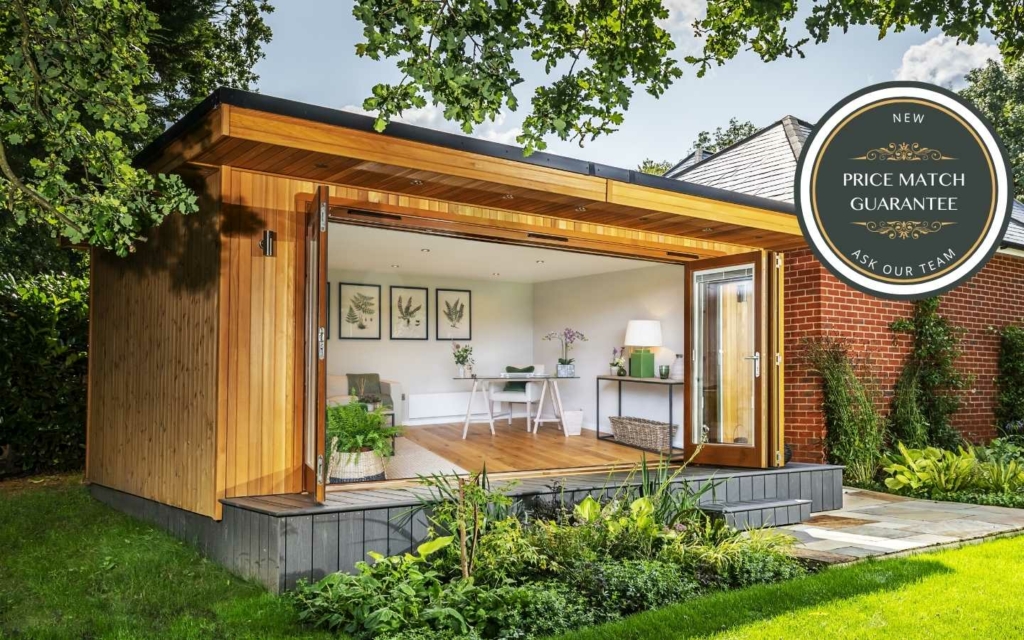If you're building conservatories, garden rooms, outhouses, garden offices or extensions, the "change of usage" concept is crucial in determining whether the need for a planning permit is necessary. Here are some important aspects to take into consideration when seeking permission to plan for a change of usage:
In most instances the planning permit will be required to convert non-residential buildings (such as agricultural buildings) to residential areas or gardens offices. This is because there could be a change in use classification.
The Garden Rooms are Living Spaces:
The use of a garden space as a separate living space (e.g. an apartment, guest house or rental unit) constitutes a change of usage. The building must be approved by the authority responsible for planning to be able to meet the requirements of residential living.
Utilization of Business
Planning permission is required if the extension or garden room is used for business purposes. The impact of the project on the surrounding areas like noise, traffic and parking, may need planning permission.
Educational or Community Use
Changes in the use of a garden structure to an educational or community space (such as the use of a meeting room or classroom) is also a requirement for planning permission. The local authority assesses the location's suitability and its impact on surrounding areas.
Impact on Local Infrastructure
Planning permission is required for any changes in use that will have a major impact on infrastructure in the local area. The local planning authority will take into consideration these impacts during the application process.
Dual Use
If a property is going to have mixed uses (such as commercial, residential or part-commercial), planning permission is typically required to clearly define and regulate the different functions within the property.
More footfall and traffic
If the proposed change could lead to an increased foot or traffic like converting a garden into an e-commerce space, planning permission will be required to handle any possible impact on the area.
Building Regulations:
It is vital to keep in mind that although a change of usage does not require a formal permission to plan, it should be in compliance with all construction codes and regulations. They are essential to protect people, their health, as well as energy efficiency. This is important to convert areas into habitable ones.
Environmental Impact:
Changes of use that could negatively impact the environment, like changing agricultural land into residential development, require planning permission. An environmental study may be required as part of an application.
Impact on Community and Amenities:
It is important to think about how the changes will affect the community's amenities and the local character. As an example, converting the garden space into a cafe requires planning permission to ensure it is in line with the community's plans and preserves local amenities.
Designated Areas:
In designated zones (such as National Parks and Areas of Outstanding Natural Beauty), there are stricter regulations in place to ensure that the unique character of the place is protected. In these cases, planning permission is required.
Local Planning Policies:
Local planning authorities have distinct guidelines regarding changes of use, which can vary significantly. It is important to review these policies so you know what types of changes can be permitted and what conditions must be met.
For a brief overview the planning approval process is typically needed for any significant change in the usage of the garden room conservatory outhouses, garden offices or extension. This ensures that the proposed application is in line with the area, and is in line with the local, national and environmental planning guidelines and is able to take into consideration the potential impact. It is crucial to speak with your local authority about planning in the beginning of the process, to be able to identify the exact requirements and get the necessary approvals. See the recommended composite garden rooms uk for more advice including garden rooms brookmans park, copyright outbuildings, copyright outbuildings, copyright garden rooms, insulated garden rooms, outhouse garden, how to get power to a garden room, garden room permitted development, garden room permitted development, composite garden rooms and more.

What Planning Permits Are Needed For Gardens, Rooms, Etc. In Terms Of Limits On Height?
Certain height restrictions will determine if planning permission is needed for conservatories, garden rooms or outhouses. Here are the top concerns regarding height that you should keep in your head:
A detached outbuilding or an extension with a dual pitched roof (such as a Gable) should not rise higher than 4 meters.
The other types of roof (flat or single-pitched) cannot be taller than three meters. ), the maximum height cannot exceed 3 meters.
Proximity of borders:
If the structure is located within 2 meters of the property's boundary, the maximum height must not exceed 2.5 meters. This applies to sheds, garden rooms and similar outbuildings.
Height of Eaves:
In any structure the maximum height of the eaves (the distance from the bottom of the roof) cannot exceed 2.5 meters.
Conservatories and Extensions:
The maximum height of a rear extension having a single story can not exceed 4 meters. This is inclusive of the parapet wall and roof.
Side Extensions:
Side extensions are restricted to a maximum of 4 meters. They are not allowed to be higher than the house that was originally built.
Special Roofs
The roofs of structures with a flat surface are usually only allowed to be up to a 3 m in height.
Additional Restrictions for Designated Areas
In areas of outstanding natural beauty, conservation areas and other designated zones, there could be more stringent height restrictions and permits for construction which would normally fall under allowed development rights.
Buildings in National Parks:
Similar to designated areas, structures in National Parks may have additional limits on height that require approval for planning.
Design of the Roof:
It is crucial to take into account the size of the tallest portion (excluding chimneys or antennas). The height of the roof should be taken into consideration. Planning permission is required if the construction's height is higher than the allowed development limits.
Neighbours' Impact:
Even if an object is within the permitted height limit the planning permit may be needed if its impact on neighbouring properties' privacy views, sunlight or privacy is significant.
Maximum Height of Overall Height:
The total height of any structure should not be more than 4 meters. As an example the top of a garden-office that has roofs that are pitched in two places should not exceed 4 meters.
Decking or Platforms
To prevent the requirement for planning permission, any platforms or decks part of the structure must not elevate the ground by more than 0.3 meters.
It is recommended to always contact the local planning authority to inquire about any modifications to regulations and specific rules. Even if a project is in the scope of allowed development rights, local modifications or particular property requirements may necessitate obtaining permission for planning. Have a look at the top what size armoured cable for garden office for blog advice including garden rooms, composite summer house, garden rooms, outhouse builders, outhouse building, do you need planning permission for a garden room, garden rooms near me, garden room permitted development, conservatories and garden rooms, garden outhouses and more.

What Are The Restrictions On Location For Garden Rooms Etc?
The location restrictions are essential when planning to construct gardens offices, conservatories or outhouses. Here are key location criteria to take into consideration.
Any structure within 2 meters of the property limit must not exceed a maximum height of 2.5 meters. If the height exceeds this limit then planning permission must be sought.
The front of the property
The permitted development right does not usually allow for extensions or buildings facing forward.
Aspect of the Property
Side extensions need to comply with the specific height and dimension restrictions and usually require planning permission if they exceed the existing wall of the sidewall.
The back of the property
The height and size of rear extensions and garden rooms located at the rear of the house is restricted. If they exceed permitted limit for development, then permits for planning must be sought out.
Designated Areas
In National Parks (National Parks) and AREAS OF OUTSTANDING NATURAL Beauty(AONB) and World Heritage Sites (World Heritage Sites) more stringent control is in place. Planning permits are required for all new structures regardless of the size.
Historic Buildings
The properties that are listed as listed have more strict guidelines. Planning permission and listed-building permits are typically required to construct a new structure or modify an existing one, no matter the area it is located within the property.
Green Belt Land:
The construction of green belts is prohibited to protect open space. It is common to require special permissions to construct a new structure or significant change.
Flood Risk Areas
In the event that the property is situated in an area prone to flooding There are additional rules to make sure the new construction does not increase the risk. Planning permission and possibly a flood risk assessment may be required.
Urban vs. Rural Settings
Urban areas typically have different rules from rural areas. Rural properties might have a more relaxed approach to the size and position of outbuildings. But this could be different.
Highways and Public Rights of Way:
If the building is located near roads, highways or public right-of-ways the approval of the planner may be needed in order to keep the structure from hindering the view, safety, or accessibility.
Shared Ownership Land or Leasehold Land
For leasehold properties or are part of a shared ownership scheme further authorization from the freeholder, or managing entity may be necessary, and planning permissions may still be required based on the local laws.
Nearby to other structures:
The planning permission must be obtained if the proposed structure is built adjacent to an existing building or structure, especially ones located on adjacent properties. This is to ensure there isn't any negative impact on nearby buildings or land.
Contact your local planning authority to get advice tailored to the specific location and conditions of your home. Local laws can influence the rules, and it's crucial to ensure the compliance of all restrictions. Follow the top rated better ground for more info including Tring garden rooms, garden rooms near me, composite garden rooms, outhouse builders, composite summer house, outhouses for garden, copyright garden room, garden room or extension, garden room conservatory, garden office electrics and more.
